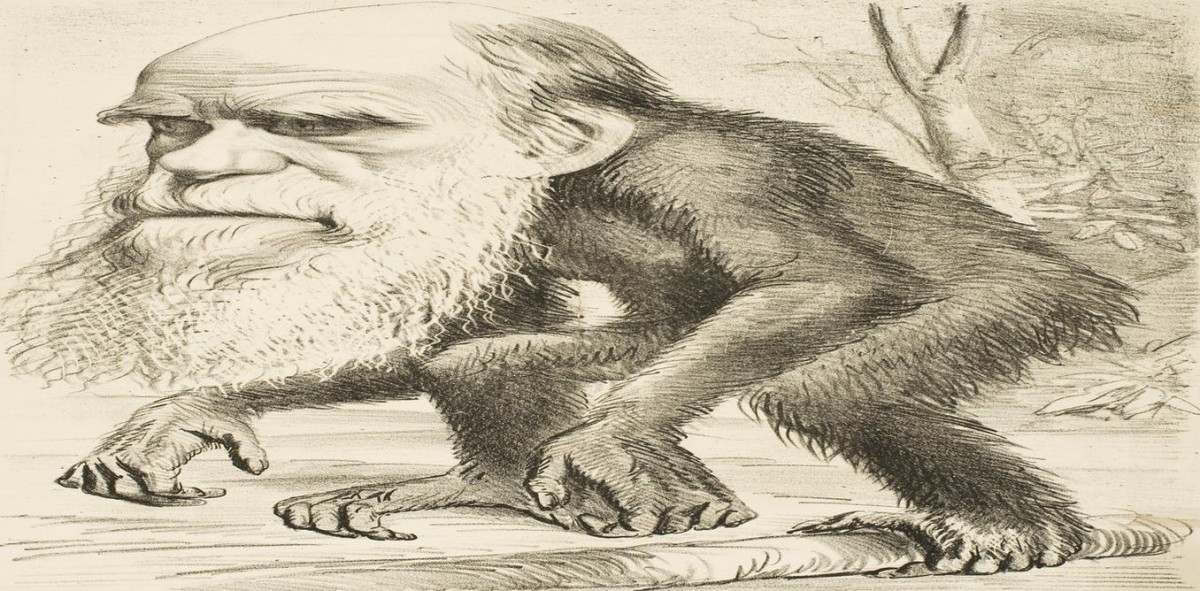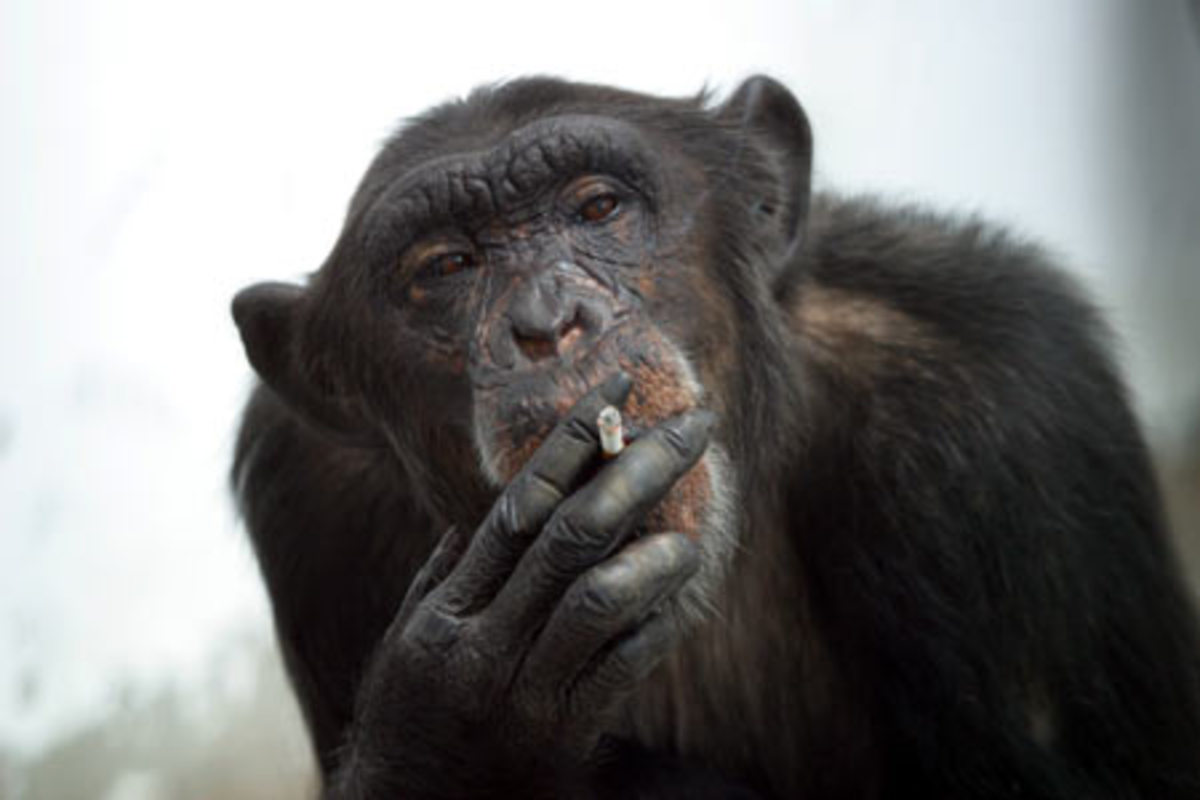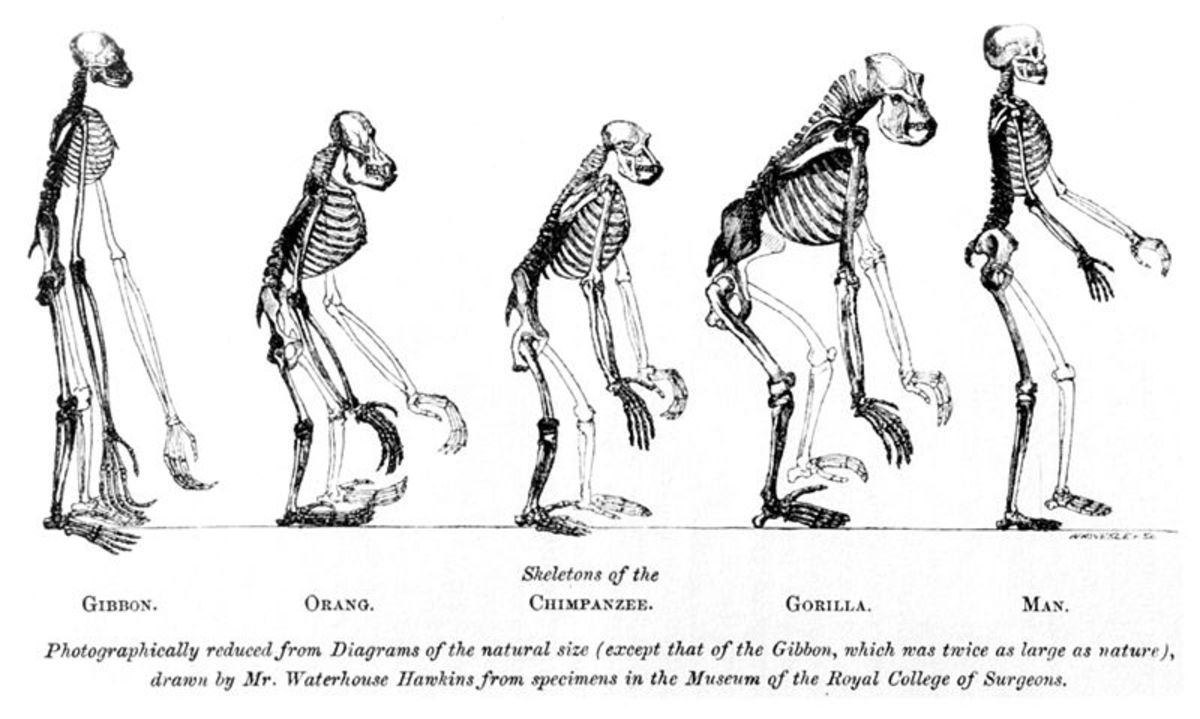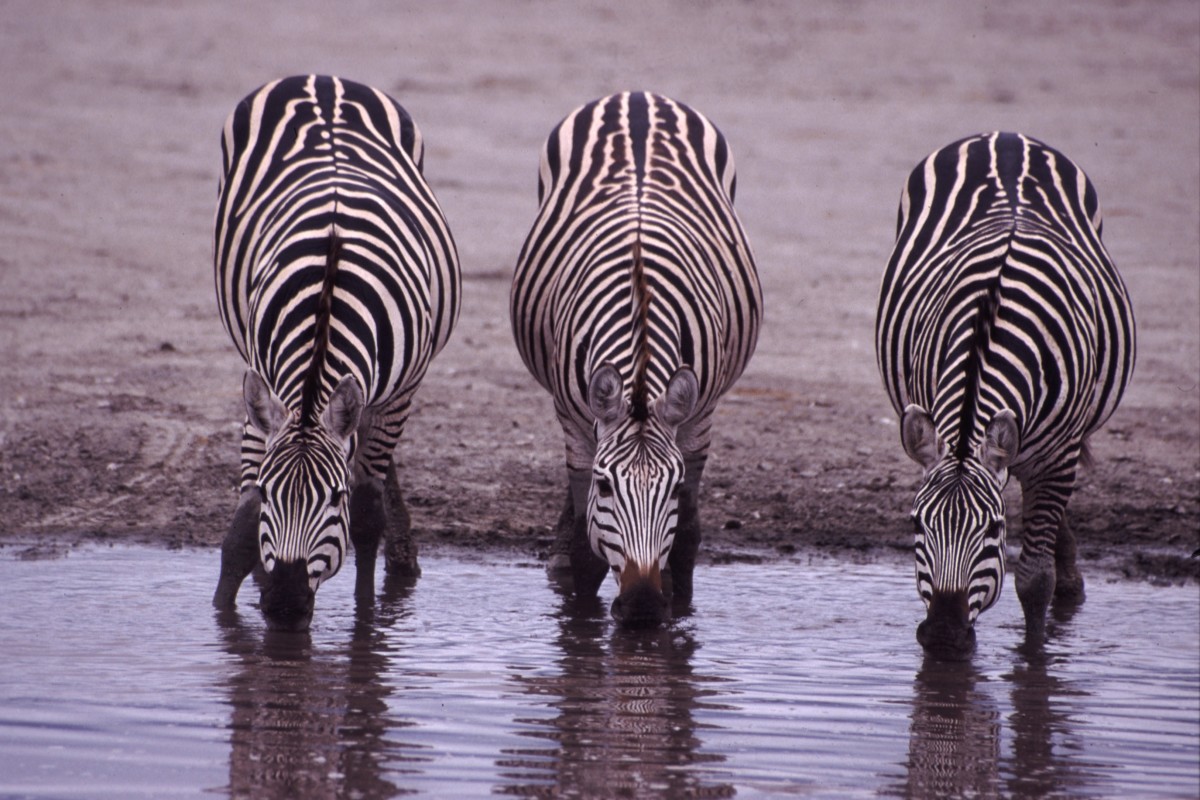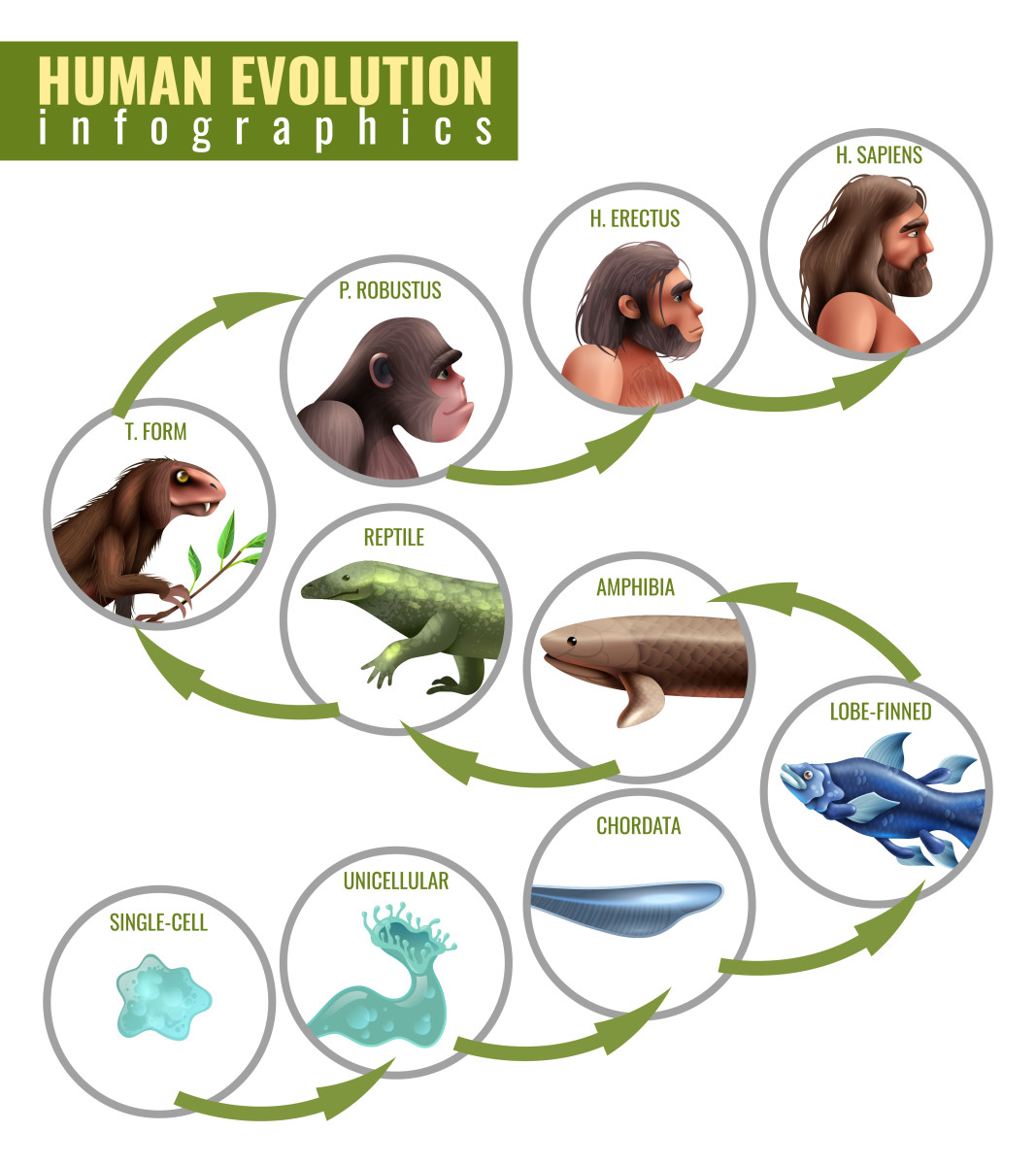What is wrong with evolution?

What is wrong with evolution?
The short answer seems to be: Nothing. It fits together pretty well as an explanation of how we all got here. But the bone I have to pick is about the way we talk about it and teach it. Something is not right and it leads people to all kinds of wild ideas and beliefs. But then again, is there something underling what we teach and how we teach it which points to something we are not saying?
Perhaps we are not coming out and saying it because it is a difficult idea to get our heads around? Perhaps we don’t know how to explain it and perhaps most people don’t see the problem, including leading biologists.
I was watching a rather good documentary about the origin of plants the other night. The narrator was talking about how flowers developed in a world that originally was just green.
Early conifers etc lived near water he said because they spread their pollen in it. Without the water these trees had no way to get to each other for reproduction. In fact, the fern family was/is really amazing because it produces animal like sperm that actually swims in order to find and fertilize another plant.
These are great facts and interesting bits of information, so the documentary was A1 on that point.
The narrator went on to tell us how plants developed flowers and showed how they adopted specific strategies to allure sometimes very specific insects to do the pollinating for them.
Listen to the language used here. Plants developed strategies.
Surely he doesn’t mean they literally/consciously developed strategies? Natural selection is about mutations surviving only when they are beneficial to the organism or at least not detrimental to the general population until they successfully procreate.
The documentary explains that even getting insects to pollinate for you is not the most efficient way to ensure reproduction. After all, a bee might visit various flowers, spreading pollen to the wrong species and wasting it. One flower found a perfect solution to the problem. It twisted it’s tubes and does not give it’s pollen freely.
In fact, only one type of bee knows the trick. Only a certain frequency untwists the tubs and unlocks the pollen. Amazingly the bee knows what it is and only beats its wings at that frequency when it wants the pollen. It also only likes the pollen from this particular plant.
Wow. How did the bee find the secret note? (middle C, by the way. The plant will pop its pollen for a tuning fork) And how did the flower survive before the bee’s penny dropped?
The way we talk about it it seems like flowers can plan elaborate schemes to trick insects to do their bidding and decide to carry them out, then voluntary alter their structure to facilitate their plan. That would imply that plants are smarter than humans by a long shot, wouldn’t it? You or I couldn’t begin to do that. Yet we talk about plants or animals as if they can. They develop strategies.
It may look that way, but according to natural selection it doesn’t work that way; and talking about evolution in that way attracts the ID people.
The idea that the conifer was living by the water because that is the only place it could effectively drop its pollen is a prime example. It did not choose to live and develop by the water because it was the only way it could effectively reproduce. It developed near water and it survived partly because the water proved to be a good way to pollinate and reproduce.
No ID required here; just natural selection.
Ferns prove to be the same thing. Sponges were one of the first plants and some species of them produce animal like sperm. In the case of those particular sponges the tadpole finds a place to burrow into the ground where it then converts its small brain to food and becomes another sponge. Amazing, isn’t it?
The fern simply developed a variation of that method as it evolved. But it did so through natural selection, not by wanting to.
Bees developing eyes that can see specific colours which just happen to be the colours of the flowers they want for food seems again to be the popular but very wrong way to look at things. But this gets a bit trickier to explain. The flower doesn’t know what colour the bees can see and the bees have no way of knowing what colour cones to develop in order to see the flowers they want.
Scientists often tell us that the colour of flowers from the bee’s perspective provide guided runways for them. As if the plants meant for this to be so. But again, we know that’s not what is happening. However, how do we explain this by natural selection alone? Or in fact, how do we explain the complexity natural selection creates?
Evolution is not a random system. It is a chaotic system. I’ve spoken about chaos before and how it creates complexity from simplicity by following simple rules. It is not by accident that bees see the colours of flowers the way they do and it is not an accident that flowers produce specific colour. Flowers and insects have developed together and from the same basic rules. Those rules create patterns that intertwine. Where the patterns meet, so to speak, you have an overlap where two different species depend on each other and seem to use each other for their gain.
It’s all cause and effect rather than random chance or intelligent design. Nature simply keeps throwing out variations on a theme like creating small sperm to do the fertilization. Sponges have one version, ferns another, and animals yet other variations. But it is all the same pattern in different forms.
A human does not choose the food we like and that which we do not. We have no choice in the matter. We like a specific food or we do not. Many share the same tastes and many do not. But we all share the same overall taste. In other words, a certain percentage of humans like bread and certain percentage do not. But we are never alone in our likes and dislikes.
Plants do not develop specific colours because they want to survive, they survive with help from the fact that they have developed specific colour. The colour they produce is defined by their genetic structure. It is defined by their specific instruction set. How that instruction set changes depends on how they react to their changing environment.
How they react to their changing environment is determined by the instruction set itself.
The thing that we can take away from all this is that all things being made of the same substance and having evolved together are inter related and indeed: interconnected. Intimately so. All things together represent a system.
We must be careful how we teach evolution. We must refrain from teaching through implication that things like plants can develop survival strategies for example. While it is a beautiful warm and fuzzy metaphor, it is not reality.
To me, the reality is much more exciting and awe inspiring.


